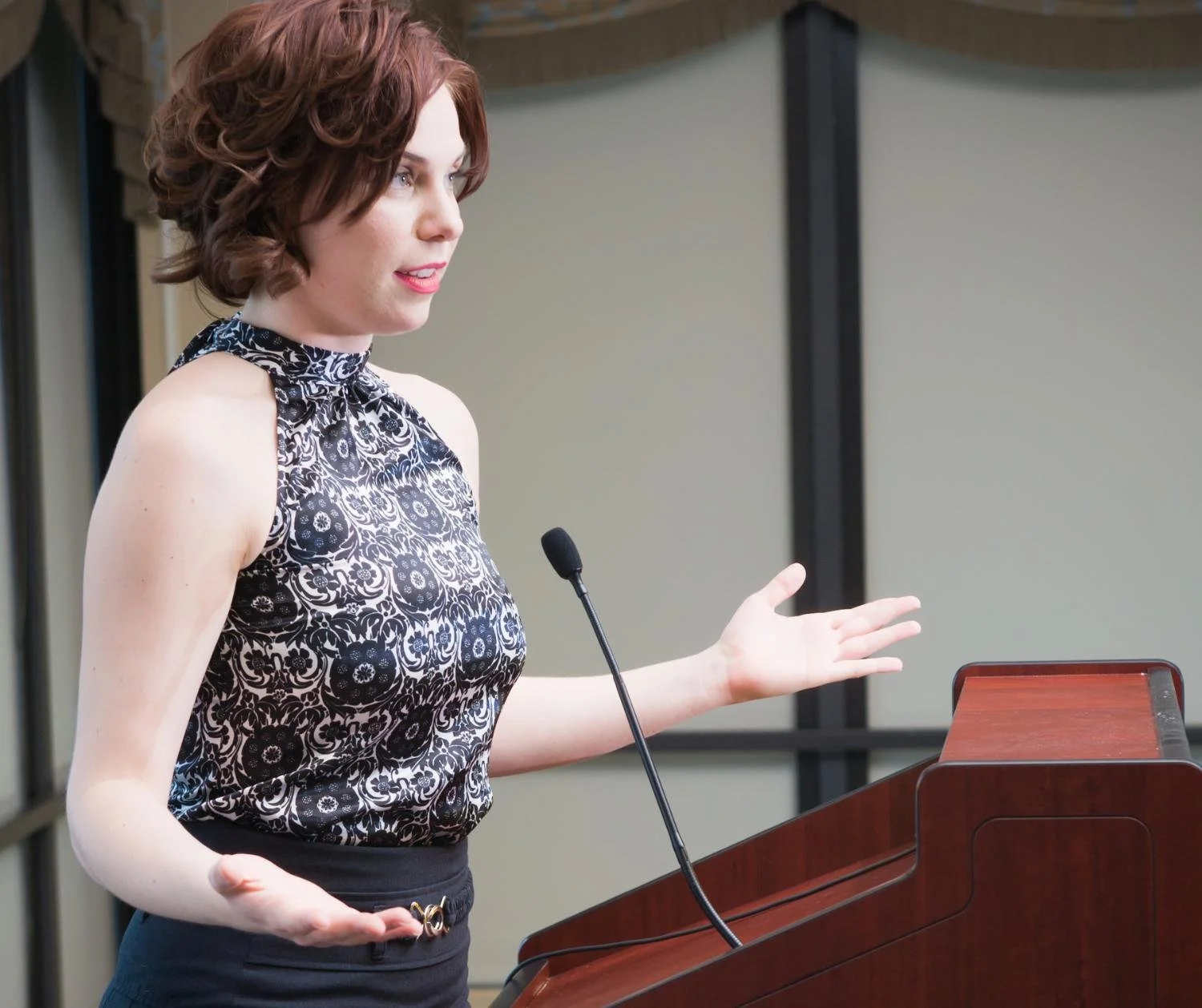Speech Clarity
Detailed Explanation:
Speech clarity refers to how easily and accurately a person’s spoken words are understood by others. It is influenced by articulation, voice quality, speech rate, volume, and enunciation. Clear speech is essential for effective communication in both personal and professional settings.
Challenges with speech clarity may result from articulation disorders, neurological conditions, or accent barriers and are often addressed in speech therapy or communication coaching.
Examples of Speech Clarity:
A child with a speech sound disorder may struggle to produce certain sounds, making speech difficult to understand.
An adult with slurred speech due to a stroke may work on articulation and pacing to improve clarity.
A professional might attend coaching sessions to improve vocal delivery and clarity during presentations.
Related Terms:
Frequently Asked Questions About Speech Clarity:
What is speech clarity?
Speech clarity is the degree to which listeners understand spoken words.What affects speech clarity?
Factors include articulation, voice quality, speaking rate, volume, and enunciation.How is speech clarity improved?
Through speech therapy exercises that focus on articulation, pacing, and vocal technique.Who may struggle with speech clarity?
Children with speech delays, adults with neurological conditions, and individuals with strong accents.Can coaching help improve speech clarity?
Communication coaching and therapy can improve clarity in professional and social contexts.
Connected Speech Pathology Articles about Speech Clarity
Muscle tension dysphonia can create confusing changes in your voice, from persistent tightness to sudden shifts in sound quality, leaving many people unsure of how to find relief. With the right combination of targeted vocal techniques, healthy breath patterns, and gentle tension-reducing strategies, voice therapy offers a clear path toward rebuilding a stronger, easier voice. This guide walks you through the most effective, evidence-based approaches used to restore vocal efficiency and support long-term recovery.
Improving articulation after a brain injury takes patience, consistency, and the right support to rebuild the brain pathways involved in speech. With steady practice, targeted exercises, and guided strategies, many people regain clearer sounds, smoother speech, and stronger daily communication skills. This article walks you through practical, research-supported steps that help restore articulation and boost confidence during recovery.
Psychogenic voice disorders can be deeply unsettling, especially when the voice stops working even though medical tests show no physical problem. Emotional stress, trauma, or overwhelming life experiences can interfere with normal voice use, creating real and disruptive symptoms. With compassionate treatment and gentle voice therapy, many people regain clarity, strength, and confidence in their natural voice.
Online singing voice lessons provide singers with a flexible and personalized way to strengthen their voices and refine their technique from the comfort of their own homes. With expert guidance, singers learn to expand their range, refine their tone, and protect their vocal health through evidence-based exercises and feedback. Whether you’re a beginner or a professional vocalist, online coaching provides the structure and support needed to build confidence and lasting vocal skills.
If your voice feels strained, hoarse, or fades by the end of the day, a voice therapist can help you find relief and restore your natural sound. These specialists use evidence-based exercises and techniques to improve breath support, vocal fold vibration, and overall voice quality. With consistent guidance and practice, voice therapy helps you speak and even sing with greater strength, clarity, and confidence.
Learning how to masculinize your voice is about more than simply lowering your pitch; it’s about developing resonance, breath control, and confidence in how your sound is perceived. With consistent, guided voice training, you can achieve a deeper, fuller tone that feels authentic and sustainable. With safe techniques and professional support, you can strengthen your voice without strain and express yourself with clarity and power.
Your tone of voice can completely change how people perceive your message. It’s not just about what you say, but how you say it; your pitch, pace, and emotion all shape understanding and connection. This guide explores how tone influences communication and offers practical ways to adjust your voice for clarity, confidence, and stronger relationships.
Many people think they need an articulation coach, but in reality, a licensed speech-language pathologist provides the expert guidance that leads to lasting change. Through structured exercises, real-time feedback, and strategies tailored to each client, speech therapy improves both clarity and confidence in communication.
Vocal nodules can make speaking or singing feel exhausting, but with the right care, recovery is possible. Voice therapy helps reduce strain, restore clear sound, and build healthier habits that protect your vocal cords long term. With early treatment, many people regain their natural voice and avoid the need for surgery.
Many children struggle with the L sound, often replacing it with a Y or W, which can make everyday words harder to understand. With the right practice and guidance, children can learn correct tongue placement and build confidence in their speech. This blog explores why the L sound can be challenging, when to seek support, and how speech therapy can make a lasting difference.
A strong speaking voice creates impact by shaping how your message is received and how confidently you are perceived. Many people struggle with weak volume, rushed delivery, or stage fright, which can cause their ideas to be overlooked. Voice training with a speaking voice coach helps build confidence, control, and presence, enabling your words to connect with every audience.
Pitch control transforms how you sound, whether you're speaking to a crowd, performing on stage, or recording for an audience. With the right mix of breath support, resonance, and vocal fold control, you can create a voice that feels natural yet powerful. Vocal coaching offers targeted exercises and expert feedback to help you refine your range, improve pitch accuracy, and deliver your message or performance with confidence.
Even if you’re not sick, frequent voice loss can be a sign that your vocal cords are under stress. Everyday habits like overuse, silent reflux, or tension in the throat can lead to hoarseness and fatigue that won’t go away on their own. With the right support, starting with a medical evaluation and voice therapy, you can restore your voice and protect it long-term.
Breath control is one of the most powerful tools a singer can develop. It supports vocal strength, improves pitch accuracy, and helps prevent strain during high or long notes. With the proper breathing techniques and consistent practice, singers of all levels can unlock a fuller, more confident voice.
Vocal nodules can make even simple conversations feel exhausting. For teachers, singers, and others who depend on their voice, that strain affects work, confidence, and connection. Online voice therapy offers real solutions from licensed experts—without ever leaving home.
Your voice is more than sound; it’s how you express yourself. Whether you’re struggling with pitch, recovering from strain, or managing a voice disorder, a singing voice specialist can help. Online sessions offer expert guidance that’s flexible, personal, and grounded in both performance and speech-language pathology.
If your voice feels tired, strained, or not as strong as it used to be, you’re not alone and don’t have to push through the discomfort. Professional voice training can help you build vocal strength, clarity, and confidence, whether speaking in meetings, teaching, or performing. With personalized support from a trained expert, you can protect your voice and communicate more effectively every day.
Your vocal tone shapes how people perceive you long before they focus on your words. Whether you're speaking in a meeting, delivering a presentation, or engaging in a casual conversation, the tone of your voice can either strengthen your message or undermine it. With practice, awareness, and support, you can develop a tone that feels natural, confident, and engaging in any setting.
A strong voice can shape how others see you and how you see yourself. Whether you're leading meetings, auditioning for voiceover roles, or simply trying to speak more clearly, voice coaching offers personalized support to help you sound confident and in control. With the proper guidance, your voice becomes a powerful tool for connection, expression, and presence.
A raspy voice can feel like your words are constantly catching, but it doesn’t have to be permanent. Your voice can regain its clarity and strength with the right combination of vocal rest, daily care, and expert support. Whether recovering from overuse or managing a long-term condition, there’s a path to clearer, more confident communication.
Online voice acting lessons offer a flexible and accessible way to train your voice for success, whether you're an aspiring performer or a professional looking to enhance your delivery. These courses cover essential skills such as vocal technique, script interpretation, and microphone proficiency, ensuring you develop both confidence and versatility. With expert guidance, structured training, and practical exercises, online learning makes it easier to break into the voice-over industry from the comfort of home.
Podcast voice training helps podcasters refine their vocal delivery, making their speech clearer, more engaging, and easier to understand. By focusing on clarity, expression, breath control, and pacing, podcasters can improve their ability to connect with their audience. With practice and the proper techniques, even common challenges like mumbling, monotone delivery, or vocal fatigue can be addressed to create a compelling listening experience.
Dyslexia is often linked to reading struggles, but it also affects spoken language, making word retrieval, pronunciation, and organizing thoughts more challenging. These difficulties can impact daily communication, from classroom participation to workplace discussions, sometimes leading to hesitation or frustration. With the right support and strategies, individuals with dyslexia can strengthen their verbal skills and communicate with greater confidence.
If you’ve ever experienced hoarseness, vocal fatigue, or difficulty projecting your voice, you’re not alone. Your vocal cords work hard every day and need proper care to stay strong. There are effective ways to improve vocal health, from breathing exercises and resonance techniques to vocal warm-ups and hydration.
Hearing loss can profoundly impact a child’s speech and language development, affecting their ability to communicate effectively. Early intervention, including speech therapy and assistive devices, helps children overcome these challenges and achieve developmental milestones. Timely support fosters improved communication skills, confidence, and success in social and academic settings.
Hearing your child’s first words is a moment every parent treasures, but when those words take longer to arrive, it can spark worry and questions about the best way to help. Speech therapy offers tailored support for late talkers, using evidence-based strategies to build their vocabulary, enhance sentence formation, and foster confidence. With early intervention and guidance, late talkers can find their voice and thrive in their communication journey.
Muscle tension dysphonia (MTD) can feel overwhelming, but recovery is achievable with the right approach. Recovery time depends on factors such as the severity of the condition and consistency in treatment, but most individuals see improvement within weeks to months. Combining professional voice therapy with proactive home care strategies can restore your voice to a healthy, confident state.
Voice cracks in adults occur when vocal cords struggle to maintain stability, often due to strain, dehydration, or stress. This blog discusses the common causes and effective remedies to prevent and manage vocal instability. Discover practical tips and professional solutions to keep your voice strong and steady.
Increasing your vocal range opens doors to greater expressiveness and impact in both singing and speaking. With techniques like proper warm-ups, controlled breathing, and gradual practice, anyone can enhance their vocal flexibility safely and effectively. Seeking guidance from professionals ensures that your journey toward a broader range is supported by expert advice and tailored exercises.
Lisps are a common speech challenge, often impacting the clarity of sounds like “s” and “z.” They can stem from various causes, such as tongue placement, dental alignment, or developmental patterns, and may persist beyond childhood without intervention. Fortunately, speech therapy offers targeted strategies to address lisps, helping individuals of all ages achieve clear and confident communication.






























